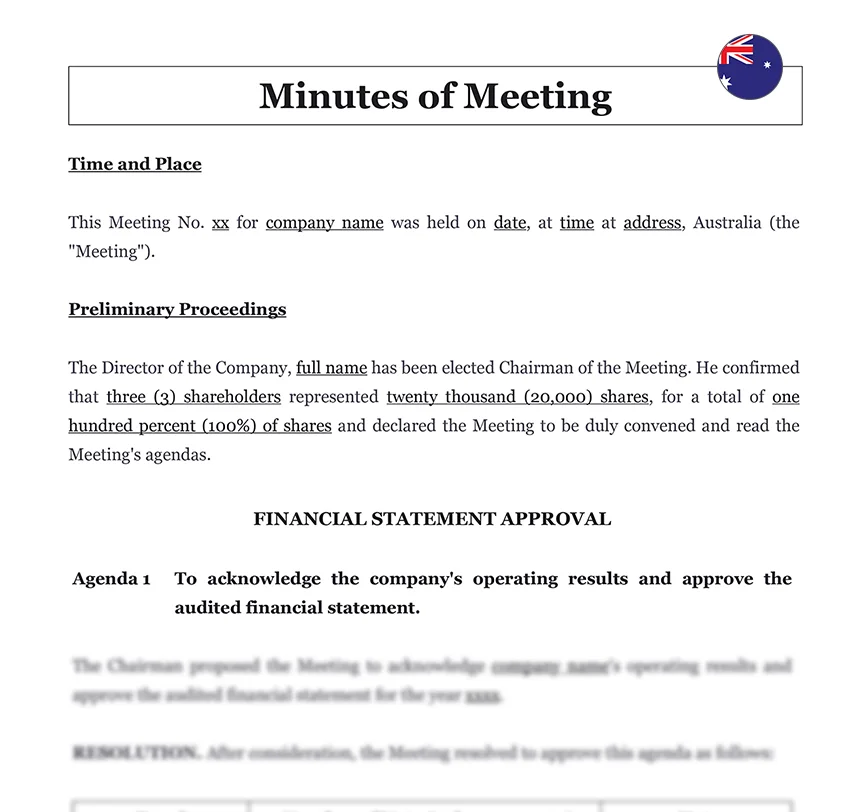The Importance of Recording Meeting Minutes
Meeting Minutes are formal records that document the discussions, decisions, and actions taken during a meeting. They serve as an official record, provide clarity and accountability, and are crucial for future reference. This guide will outline the best practices for recording meeting minutes in Australia, highlighting the significance of maintaining comprehensive and accurate documentation.
Preparing for the Meeting
Proper preparation is key to ensuring that meeting minutes are recorded effectively.
1. Agenda Distribution: Distribute the meeting agenda to all participants in advance. This helps everyone understand the topics to be discussed and allows the minute-taker to structure their notes accordingly.
2. Attendee List: Prepare a list of expected attendees. This helps in accurately recording who was present, absent, or excused from the meeting.
3. Templates: Use a standardized minutes template to ensure consistency in recording. This template should include sections for the meeting date, time, location, attendees, agenda items, discussions, decisions, and action items.
4. Technical Setup: Ensure all necessary technical equipment, such as audio recorders (with consent), laptops, or tablets, are ready and functional to facilitate accurate recording and note-taking during the meeting.
Role of the Minute-Taker
The minute-taker plays a crucial role in ensuring that meeting minutes are accurate and comprehensive.
1. Active Listening: The minute-taker should actively listen to the discussions, focusing on key points, decisions, and action items rather than transcribing everything verbatim.
2. Impartiality: The minute-taker should remain impartial and objective, avoiding personal opinions or interpretations of the discussions.
3. Clarification: If unclear about any points during the meeting, the minute-taker should seek clarification immediately to ensure accuracy.
4. Preparation: Before the meeting, the minute-taker should review previous minutes and the current agenda to understand the context and key issues that may arise.
Capturing Key Information
Minutes should capture the essential elements of the meeting without unnecessary detail.
1. Basic Information: Include the meeting date, time, location, and names of attendees and absentees.
2. Agenda Items: Record each agenda item discussed, ensuring they follow the order in which they were presented.
3. Discussions: Summarize the main points of discussion for each agenda item. Focus on the key arguments, points of consensus, and any major disagreements.
4. Decisions and Resolutions: Clearly document all decisions made, including the outcome of any votes taken. Specify the exact wording of resolutions passed.
5. Action Items: Identify all action items, assigning responsibility and deadlines for each task. Use clear and specific language to avoid ambiguity.
Writing the Minutes
When writing the minutes, clarity, conciseness, and accuracy are paramount.
| ➤ Use Clear Language: Avoid jargon or complex language. Write in clear, concise sentences that accurately convey the discussions and decisions. |
| ➤ Be Objective: Maintain an objective tone, avoiding subjective comments or opinions. |
| ➤ Structure and Format: Follow a structured format, using headings and subheadings to organize the content. This makes the minutes easier to read and reference. |
| ➤ Review and Edit: Review the draft minutes for accuracy and completeness. Edit for grammar, spelling, and clarity. |











